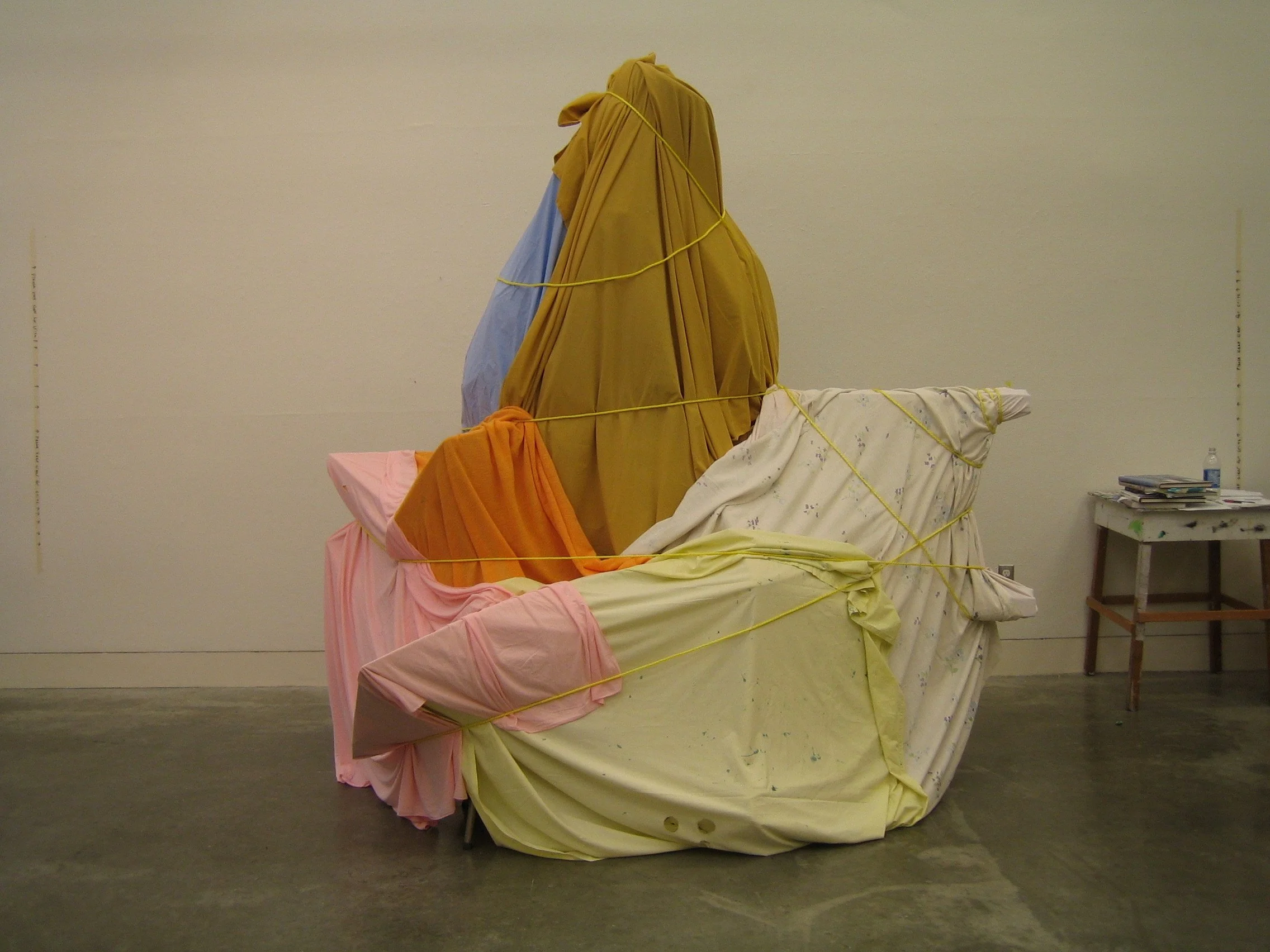For the beginning painter. This project is about looking, voicing, and finding meaning within the process. As beginners, the painter is discovering the materials of paint and the unique voice they bring into the work.
A still life was presented to the class for study. It portrays a mass that could reference anything, or could just be what it is, a couple of easels and a work table wrapped in cloth and roped together.
The class was asked to study this thing and do a painting “of it.” But what “of it?” Seeing what’s right in front of you may be a struggle. There are decisions to be made to begin with: how close to sit, how to crop the form within the boundaries of the canvas, what pigments to put on the palette, which brush to use, where to focus the eye. The experience of seeing fluctuates. Painting has the great characteristic of being able to capture that process. And within that process, new meaning can be created.
Is there a visual language to the paint that will speak a version of what lies in front of the painter? The language of paint is in the materials of the painter that come out of tubes or tubs of viscous coloured substance that is applied with various shaped brushes onto a surface. The language of paint is also in the unique “voice” of the painter. Just like the singer has a unique voice, the painter also has a unique voice in how they handle the paint, how they mix pigments together, the ideas in their head, the formal elements they choose to focus on.
This class project introduced the idea that the painter can choose or intuit how to describe the character of an object. There are many methods and strategies: by cropping it up close, or widely; by using a dark or light palette; by incorporating lots of contrast or soft colour transitions; in the surface quality of the use of paint, by the character of gesture, etc.
The goal of this project is to allow the student to explore what they already know about their voice, and what potential exists in developing the visual language of their work in painting.
Posted August 22, 2022
Photo: September 2007, University of Victoria
